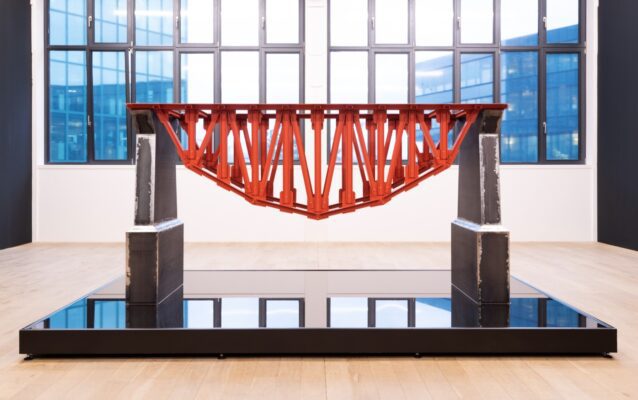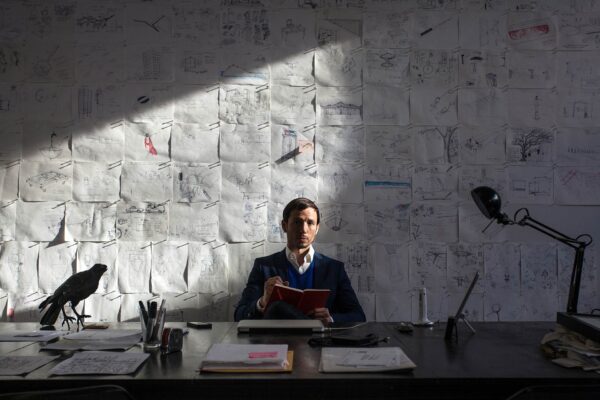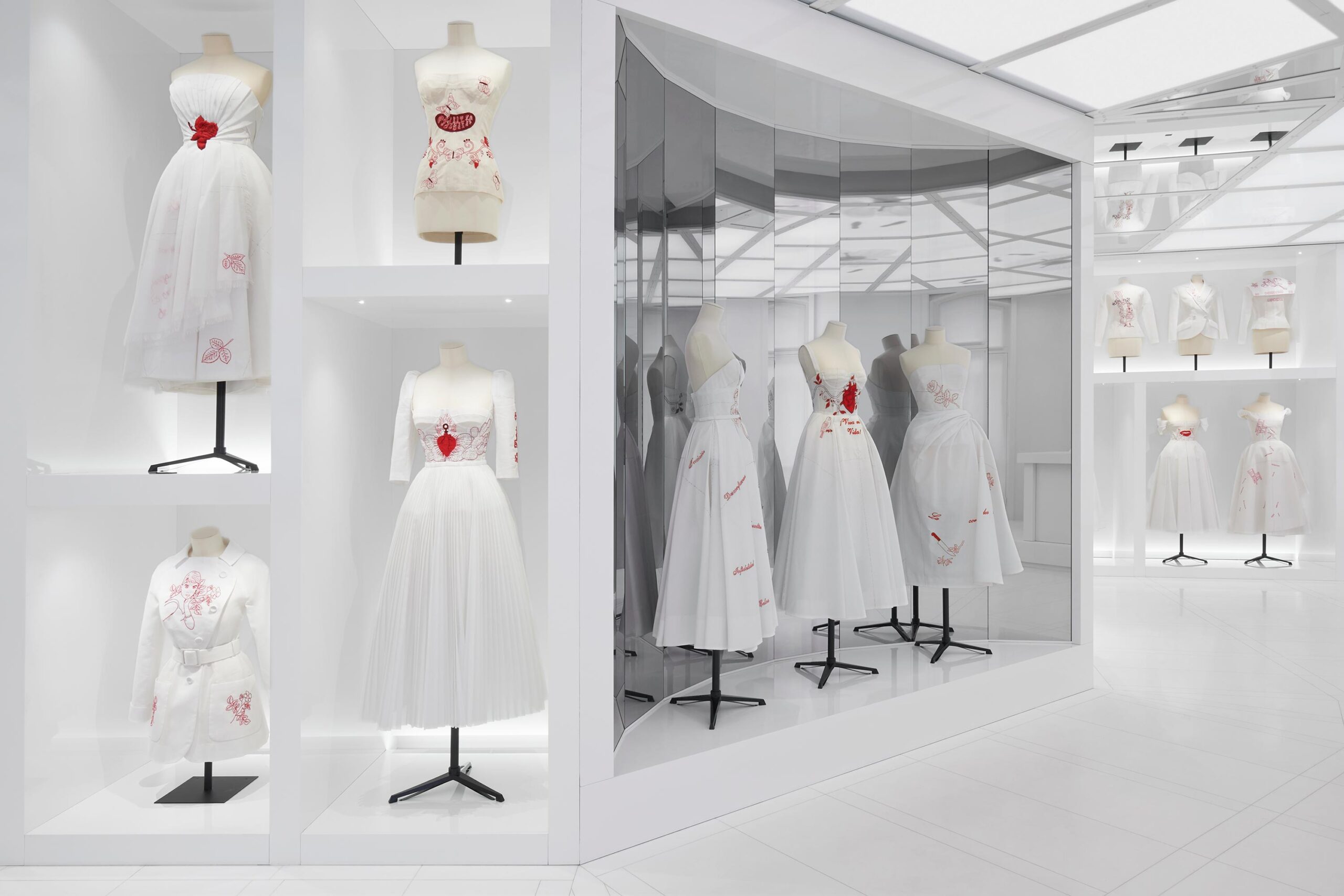
The exhibition "Empowering Elegance: Celebrating Women's Artistry" at La Galerie Dior.
COFFEE WITH
ELINA CHAUVET: “CREATING AND RAISING AWARENESS IS SOMETHING PERSONAL TO ME”
Name: Elina Chauvet
Profession: Artist
Nationality: Mexican
Instagram: @elinachauvet
From November 24, 2023 through May 13, 2024, La Galerie Dior presents “Empowering Elegance: Celebrating Women’s Artistry,” a homage to female artists and their profound impact on the world of art and fashion. Among the luminaries featured is Mexican artist and activist Elina Chauvet, creator of the “Red Shoes” performance, whose works intertwine seamlessly with the legacy of Dior.
In the Toiles room, white muslin dresses and tops serve as a blank canvas for embroidered dresses with phrases, words and symbols linked to femicide using red thread, a color that symbolizes blood and love for the artsit. We spoke with Elina about her work and collaboration with Dior.
LATINNESS: Elina, we are familiar with your influential work as an artist, but we wanted to hear more about your beginnings. You originally studied architecture. How did you end up in the art world?
ELINA: The world of art has always been my passion, so it wasn’t a big change for me. I wanted to study art, but also architecture. So, I pursued the latter until there came a point in my life when I said: ‘Enough!’ At the age of 30, I decided to fully immerse myself in art and leave behind architecture, which had previously been one of my great passions, but left me disappointed. During those days, I was living in Ciudad Juárez and working in the construction of maquiladoras. There were very few women doing fieldwork in the area, so I just decided to go for it.
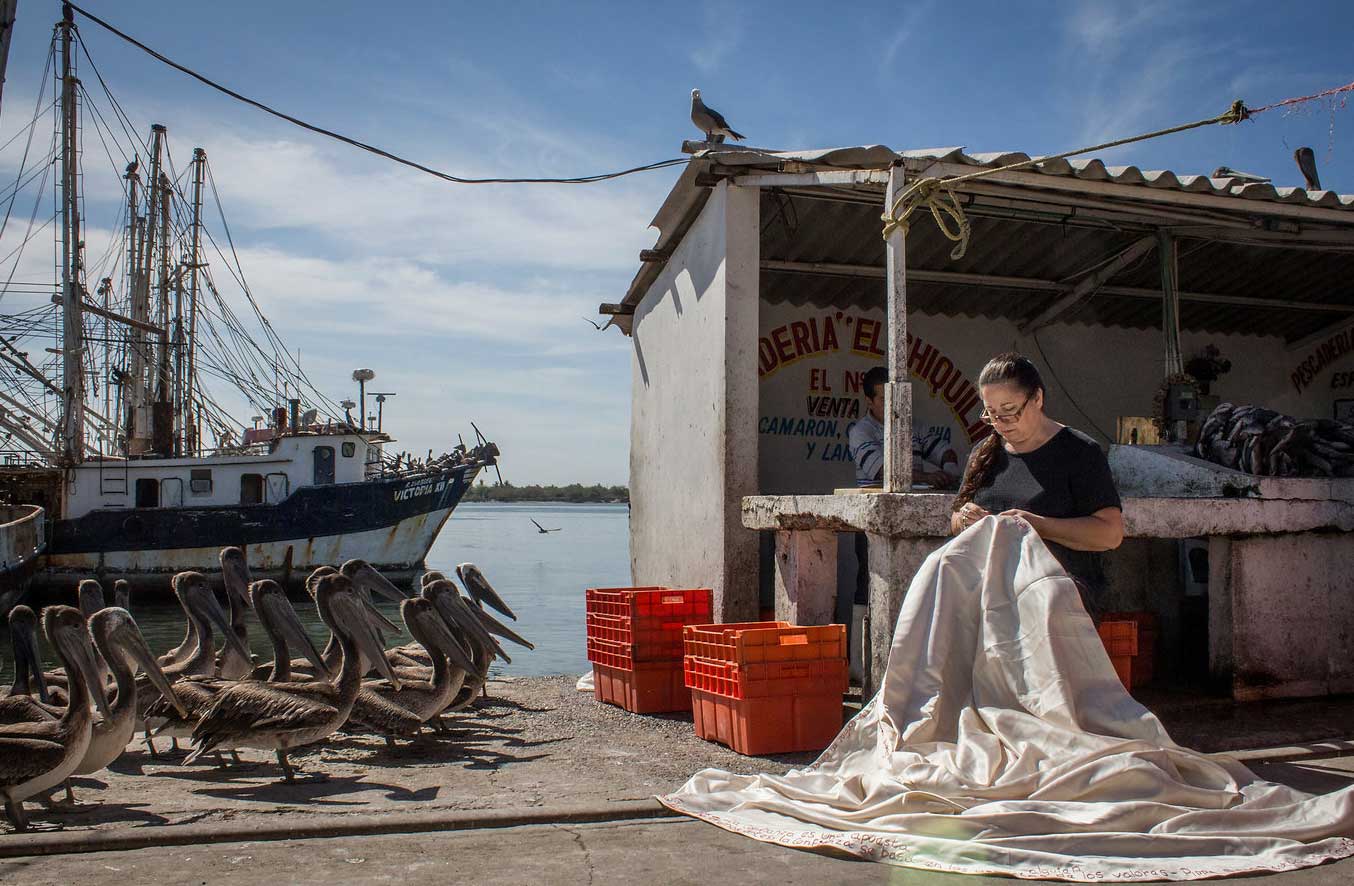
“CONFIANZA”, Performance-Installation-Relational Art in process, 2013.
LATINNESS: And Ciudad Juárez was a place that was familiar with what was occurring politically and what women were facing in those days. Did you channel your art towards that?
ELINA: During that time in Ciudad Juárez, not much was being said about femicides yet. The news started a year after I left. I remember perfectly well that they found a woman, a victim of a tremendous act of femicide. This was in1989. The record was noted a little later because it was uncommon… It was thought to be an isolated case.
Then, some months passed before they started again, and in a more continuous way..
LATINNESS: Let’s talk about your Red Shoes project. It’s impressive what you’ve achieved, spreading the message to so many places, from Argentina to Italy, Spain, the United States, and Canada. What do you aim to communicate with it?
ELINA: The project has already been replicated in 27 countries. This year marks 15 years since I started the installation in 2009. My aim is for people to see what I’m seeing occur: that women have taken to the streets to demand and make changes in their lives. Nowadays, I hear young women, and there is no longer submission to abuse. There’s no acceptance, and there’s also a growing awareness among men. They are starting to realize what’s happening, from the subtlest forms of abuse, which become daily occurrences and customs.
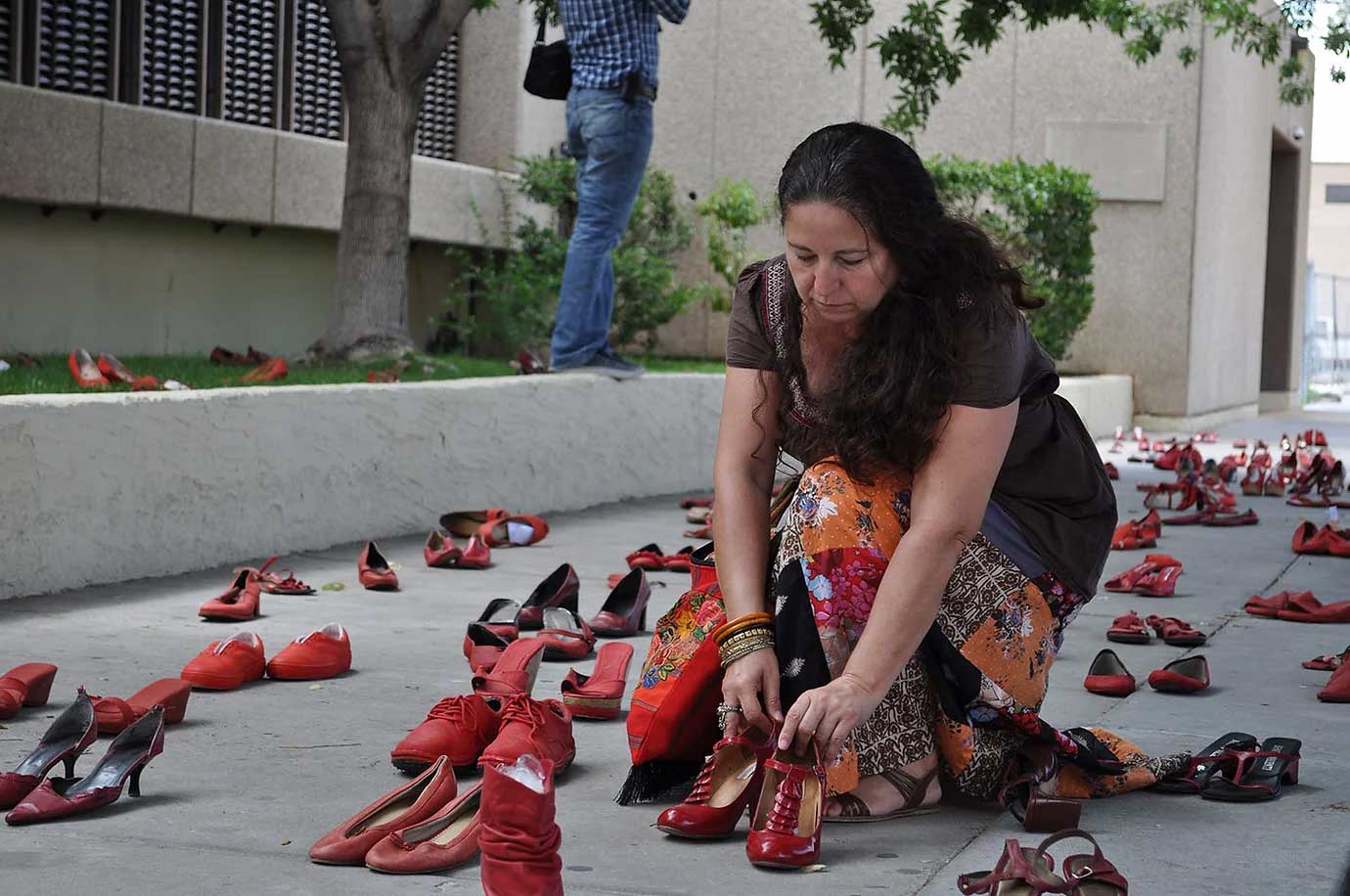
“Red Shoes”, Performance-Installation, El Paso, Texas, USA, 2012.
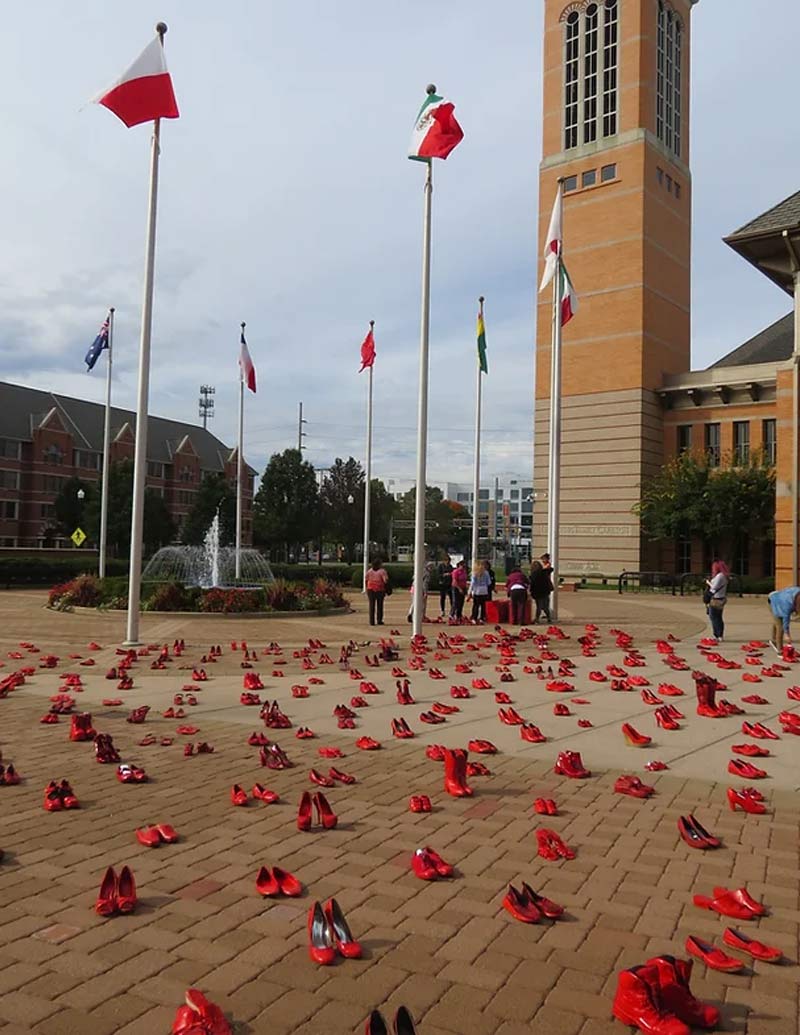
“Red Shoes”, Performance-Installation, Grand Rapids, Michigan, USA, 2017.
LATINNESS: Throughout your travels you’ve encountered many women. Do you have any anecdotes about the direct impact you have witnessed through your work?
ELINA: I can share some things that have happened during the installations. For example, in Oaxaca, we had a very tough experience when suddenly a tourist arrived, stood in front of the shoes, and began to cry terribly, very painfully. We were all deeply affected by her cry that came from the depths of her being. We went to give her support, to hug her. When she calmed down, she took off her glasses and we could see that she only had one eye. She told us how her ex-husband had gone to her workplace and stabbed her. Although she survived the attack, when she saw the shoes, she immediately understood what the installation was about. Of course, I know many victims and survivors, especially mothers.
I don’t know if you’re aware of my story, or what inspired the Red Shoes. It originated when my sister died. She passed away when I was just starting in the arts, and I was no longer in Ciudad Juárez. All that pain, that mourning, I poured it into painting (because I began this process with painting).
Many years passed, and I didn’t even realize I was creating feminist art because I was already painting and doing things that centered around the violence that women have suffered for generations.
Ultimately, the foundation of my work is the femicide of my sister. It was a domestic case; that is, it happened in her home, which is the most common scenario in most countries, and, of course, in Mexico and Latin America, in general.
With Red Shoes, I want to address all the forms of violence that we endure, and that’s why the artwork exists.
LATINNESS: It’s inspiring how you’ve been able to channel the suffering through art. Your work proves that art can truly touch and deeply impact people’s lives, while simultaneously raising awareness. You’ve turned this extremely painful experience into something really beautiful.
ELINA: Well, love has a very great force, doesn’t it? I think it has also helped me a lot because when you harbor such great pain and helplessness, there are two options: either you succumb to hatred or you do the opposite. And the other option destroys you, so creating and raising awareness is something personal to me, something we need… A social change.
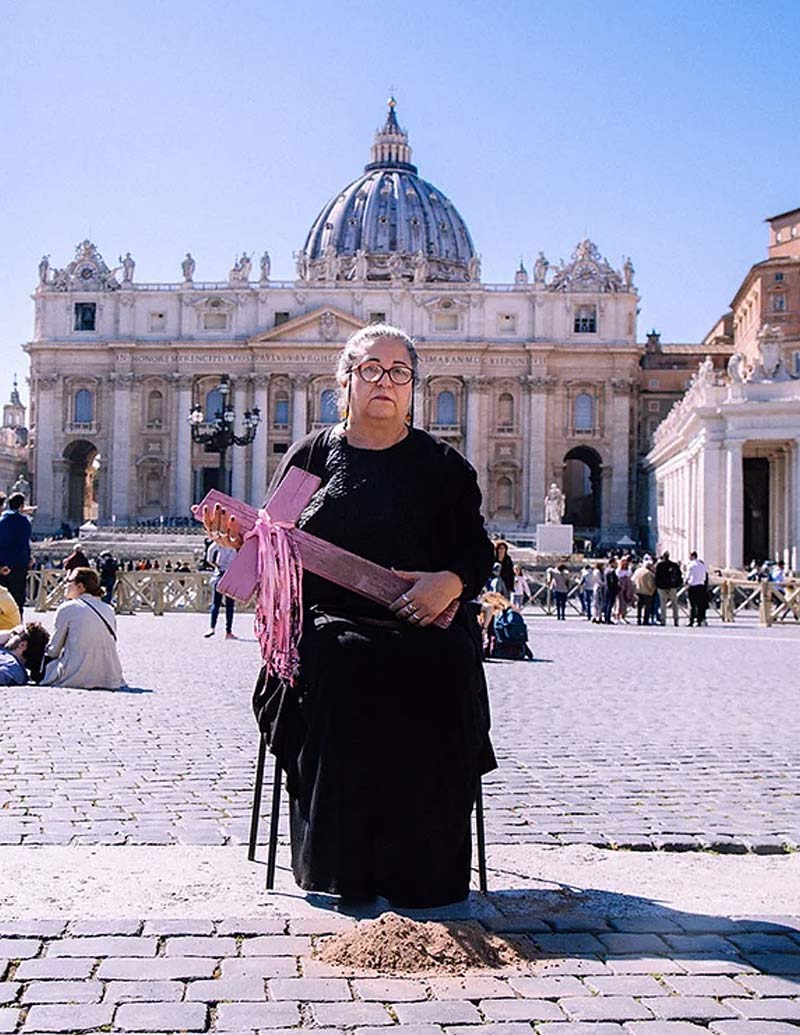
“PIETATEM”, Performance.
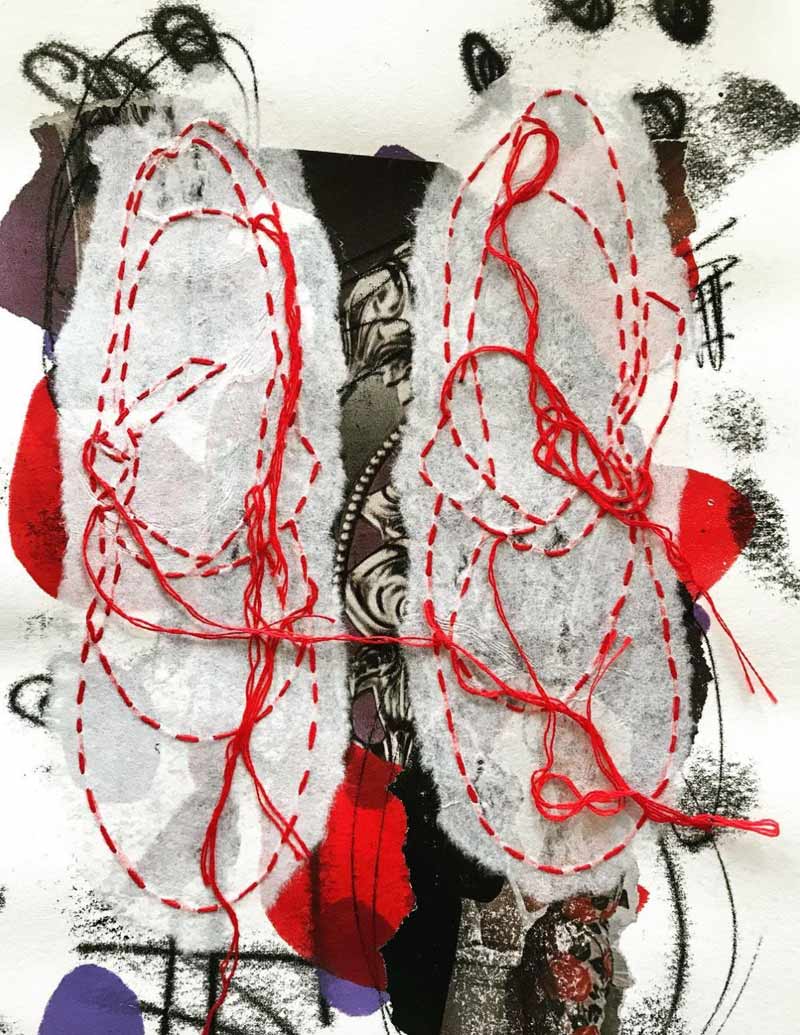
Detail “A Corazón Abierto”.
LATINNESS: We’ve become so desensitized by traditional media where we hear repetitive news about wars and femicide so often, in such a factual, emotionless manner. In recent years, around the world, artists, musicians and authors have managed to break through and create real change through their work. What you’re doing is essential in spreading awareness and really reaching the people on a more emotional, personal level.
ELINA: In hindsight, when I think about the moment I started, 15 years ago now, there were young girls who weren’t even born yet and who now talk about feminism. I know I’m not the only artist doing this; there are many people raising awareness through the arts. Of course, aiming for social change is very ambitious, but processes occur and start with awareness of what’s happening. You no longer live on autopilot, repeating what has been repeated and continues to harm, because violence against women doesn’t just harm women, it affects the entire social fabric.
LATINNESS: Apart from the Red Shoes series, you created another one titled Corazón Abierto (Open Heart), inspired by the story of the Italian artist Pippa Bacca and her own femicide. Can you talk to us about the significance of this story and how it relates to your project with Dior?
ELINA: I started in 2013 when I learned about Pippa Bacca’s story. It impacted me tremendously, so I wanted to pay tribute with a piece. My intention was to repeat her name and, in doing so, make her story known. And well, you find out what happens to people and the consequences, even on an emotional level, as it happened to me. What I did was this performance called Novias en Tour (Brides on Tour), in which some women traveled through the Gaza Strip dressed as brides, and some of them split up. Pippa was taken by a guy who raped and killed her. For this, I got a wedding dress. Pippa’s work had to do with the theme of trust in others, which was like a kind of marriage with cultures, so there was this connection with the dress.
I started asking people about the meaning of trust. We all have a specific definition, so I approached those I could with the dress, emulating a bit of Pippa’s journey… I would take the dress and embroider it in that place, to remember her, tell her story, and get more definitions of trust.
Maria Grazia had already seen Red Shoes in Milan, and it was precisely the first international installation I did. Soon after, she became the Creative Director, so she always kept me in mind.
When the opportunity for the project they were doing here in Mexico arose, she had also seen Pippa’s piece. We met and talked about it. She asked me what I wanted to do– a piece for the walls or something else. I chose to intervene in some dresses because it’s something that originated from Pippa Bacca’s project, although it’s a spin off… Let’s say, it’s another piece.
That’s how A Corazón Abierto was born. It consists of dresses that have a message, a denunciation, something related to feminism. There are some inspired by Frida Kahlo, which was a big theme of the show, pieces of Kahlo that had to do with femicide.
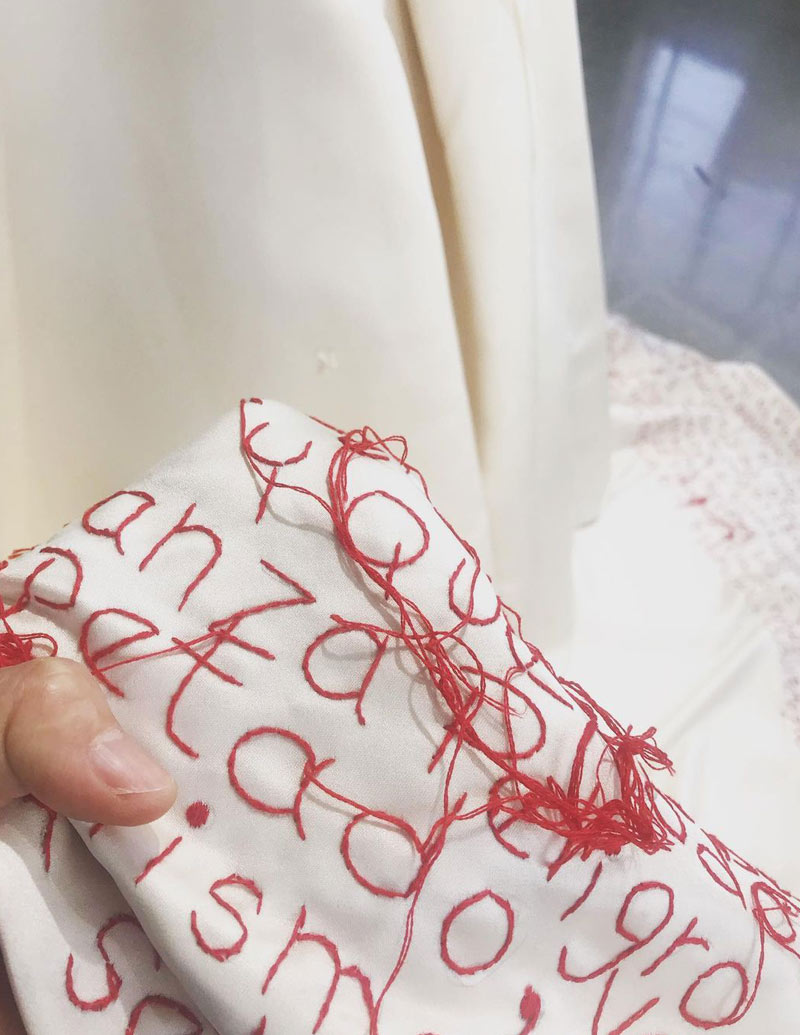
Dresses from the "A Corazón Abierto" project.
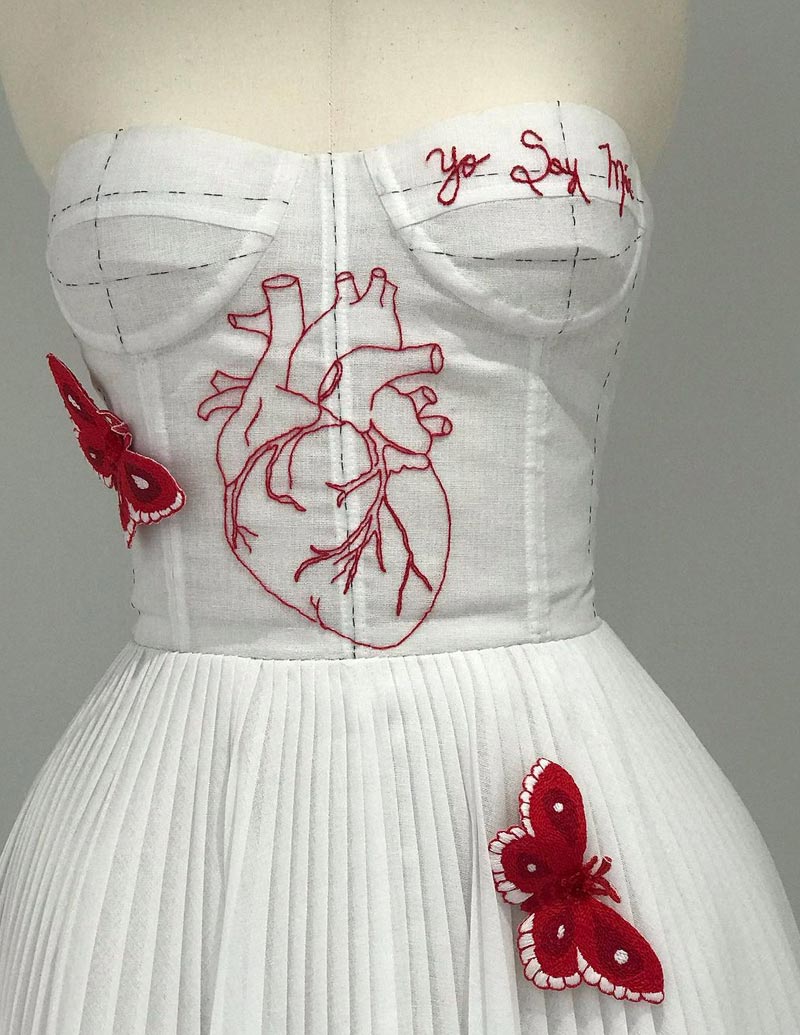
Dresses from the "A Corazón Abierto" project.
LATINNESS: What does it mean to you to receive support from a house like Dior and from Maria Grazia, in particular, who was already familiar with your work?
ELINA: You can imagine it was very exciting for me as an artist, something magnificent. It was an incredible experience in every aspect: the exhibition, the outcomes… It was a wonderful experience. Amazing.
LATINNESS: And these dresses are now exhibited in Paris…
ELINA: Yes, they are in the Dior gallery. I don’t know if you’ve had the chance to visit it… It’s a whole white hall and the dresses are displayed in niches. It’s spectacular and visually very, very beautiful. The presentation, the curation they did, everything is very beautiful, and I think it has been well received.
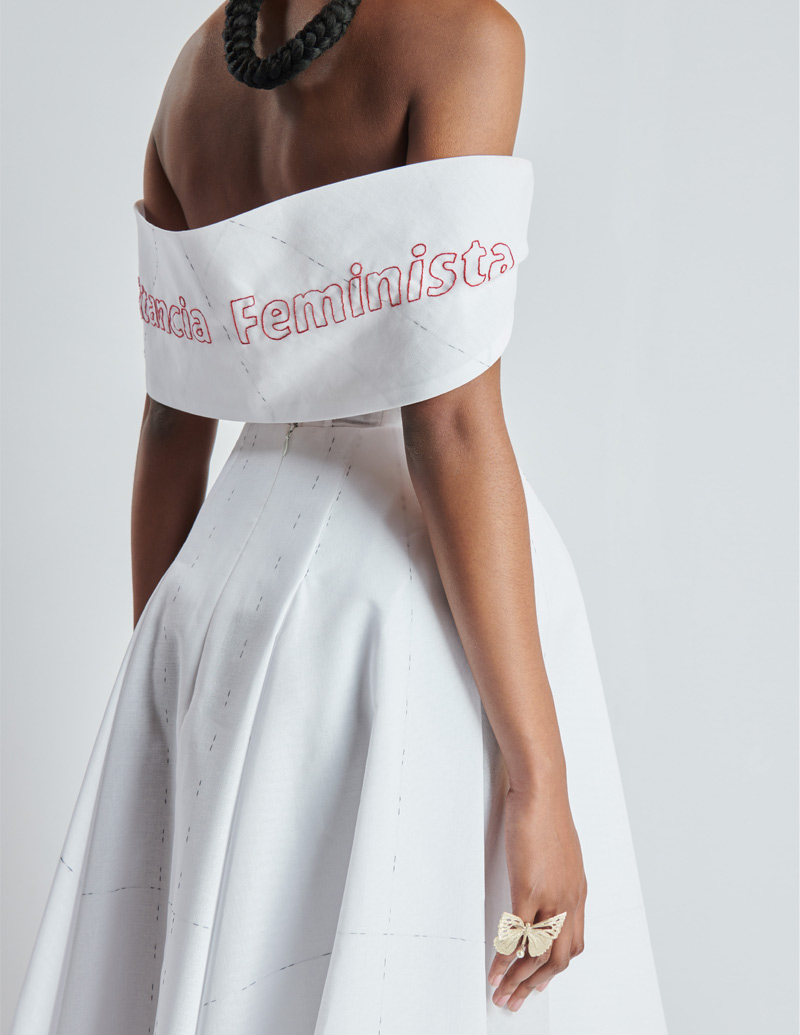
Works from the "A Corazón Abierto" project at La Galerie Dior.
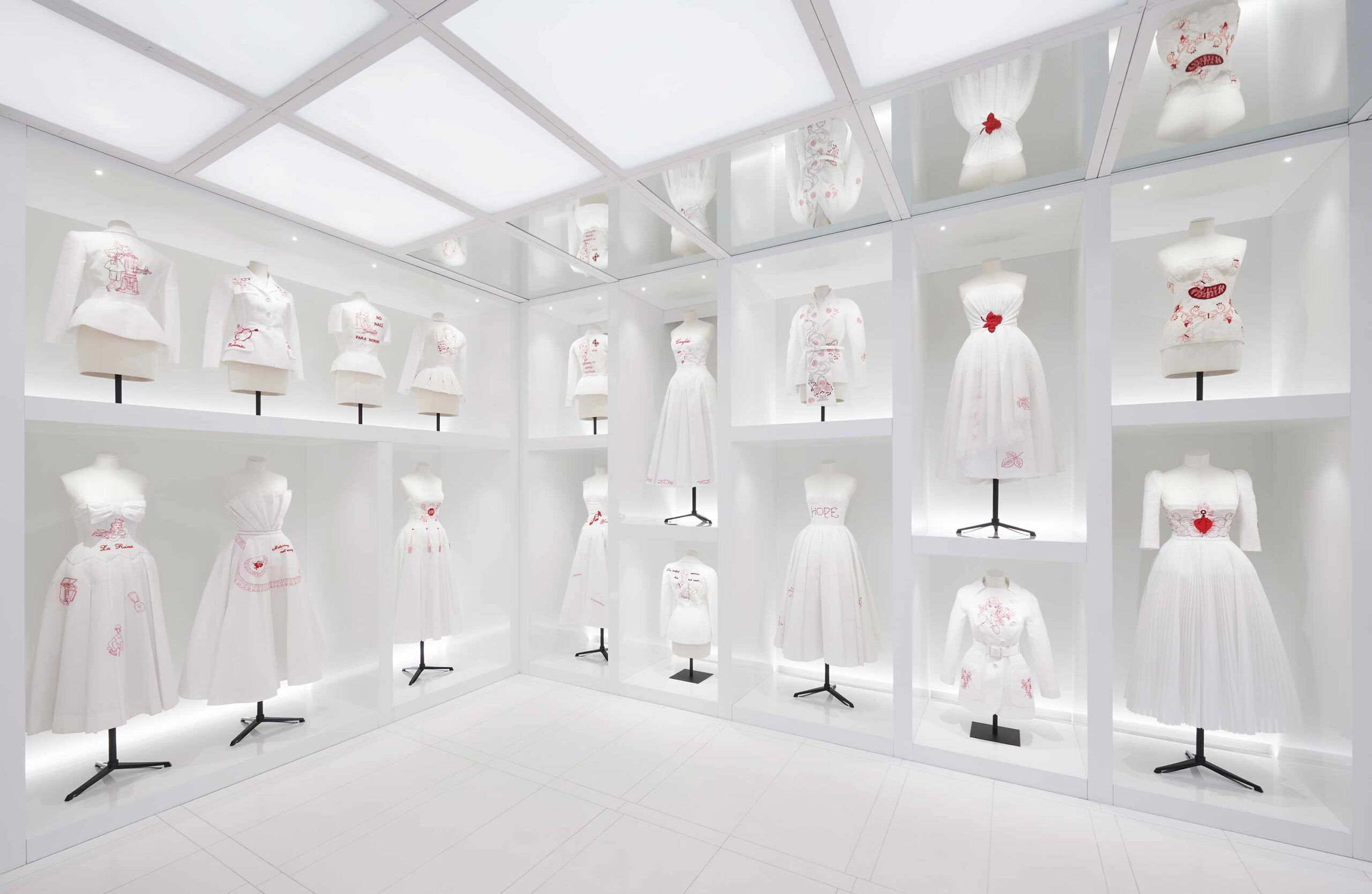
Works from the "A Corazón Abierto" project at La Galerie Dior.
LATINNESS: At this moment, what plans do you have for future artistic projects?
ELINA: I’m always working on and developing projects, whether they’re invitations or not. In fact, I’m about to release a piece that is also feminist– it’s a piece of exploration. I can’t give you many details, but I will announce it in about a month. I’m always creating, and the year has just begun, so I’m sure there will be new invitations and things to participate in.
LATINNESS: I love how you’ve been able to turn this personal tragedy into a cause that touches so many women and even children. I live in Milan, and we had a very sad femicide in November with a girl named Giulia Cecchettin.
ELINA: Yes, I heard about it, of course.
LATINNESS: On the day of the funeral at the Basilica, the father stated that in this moment of pain and sadness, we must find the strength to react, to transform this tragedy into an impulse for change. I feel that’s what you’re doing and have been doing for the past 15 years.
ELINA: Yes, it’s very sad that many people only realize how important this urgent change is when tragedy strikes close to home, when there’s no turning back.
That’s why I keep inviting people because from our space, whatever it may be, we can impact our children and the people around us, even our neighbors. Simply by talking about it, about how we need to transform the patterns we’ve been repeating that haven’t worked. Obviously, it’s a very profound topic to talk about changing a patriarchal, sexist system that has harmed both men and women, and all of society. For example, domestic violence is perpetuated with children who replicate that violence and women who accept it.
So, working on that is a great pleasure, and I have many schools asking me for the installation.
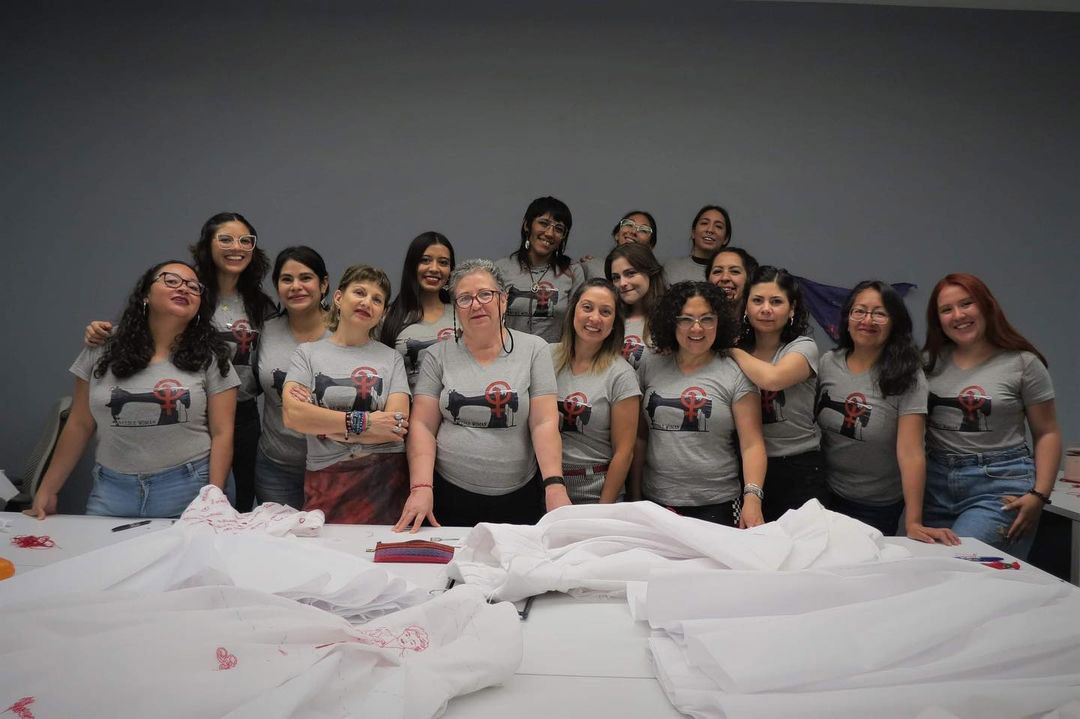
Elina Chauvet with her community of women.
LATINNESS: Education on the topic is essential.
ELINA: Even the other day, I received a book– I think from Milan– for school, and there are exercises in which my installation appears. These are exercises that children and young people have to do where the topic is discussed.
Gender perspective education is super important, and the fact that schools are already introducing it into their educational systems is wonderful.
LATINNESS: Yes, 100%. After all, we have to start with the young ones to change future generations.
ELINA: That’s right. Well, you’re both very young yourselves.
LATINNESS: And now we are mothers, so we are already in that stage of instilling values in our children.
ELINA: I think all human beings deserve dignified lives, right? Without suffering. There are already too many problems in the world, too many things. Let’s get rid of this burden.
LATINNESS: Thank you very much for your time, Elina.
Images courtesy of Dior and Elina Chauvet.

